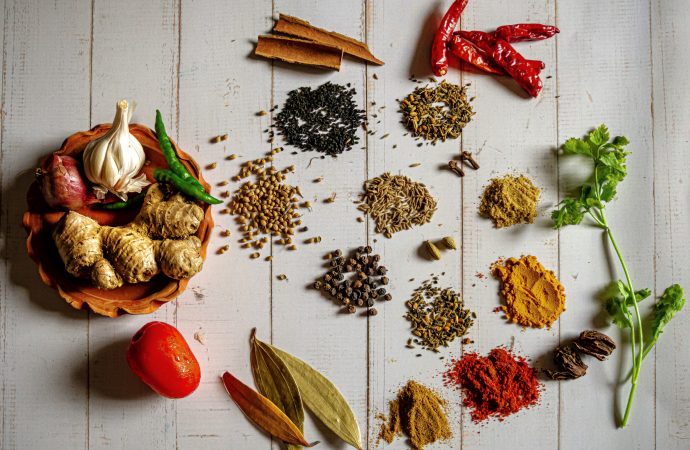Spices are more than just flavor enhancers. They can also provide a wide range of health benefits. From reducing inflammation to boosting digestion, spices have been used for centuries in traditional medicine. In addition to their health benefits, spices can also transform a bland dish into a flavorful masterpiece. Here’s a guide to using spices
Spices are more than just flavor enhancers. They can also provide a wide range of health benefits. From reducing inflammation to boosting digestion, spices have been used for centuries in traditional medicine. In addition to their health benefits, spices can also transform a bland dish into a flavorful masterpiece. Here’s a guide to using spices to add flavor and health benefits to your cooking.
Cinnamon: Cinnamon is a sweet and fragrant spice that is often used in baking. It has been shown to lower blood sugar levels, making it a great addition to dishes for those with diabetes. Cinnamon is also rich in antioxidants and has anti-inflammatory properties.
Turmeric: Turmeric is a bright yellow spice that is often used in Indian and Middle Eastern cuisine. It contains a powerful compound called curcumin, which has been shown to have anti-inflammatory properties and may help prevent Alzheimer’s disease and cancer. Turmeric can be added to curries, soups, and smoothies.
Ginger: Ginger has a spicy, slightly sweet flavor and is often used in Asian cuisine. It has anti-inflammatory properties and may help reduce nausea and improve digestion. Ginger can be added to stir-fries, smoothies, and tea.
Garlic: Garlic has a strong, pungent flavor and is often used in Mediterranean and Asian cuisine. It has been shown to have antibacterial and antifungal properties and may help reduce cholesterol levels. Garlic can be added to pasta dishes, sauces, and roasted vegetables.
Cumin: Cumin is a warm and earthy spice that is often used in Mexican and Indian cuisine. It may help improve digestion and has been shown to have anti-inflammatory properties. Cumin can be added to chili, tacos, and soups.
Paprika: Paprika is a mild, sweet spice that is often used in Hungarian and Spanish cuisine. It is rich in antioxidants and may help improve blood sugar levels. Paprika can be added to soups, stews, and roasted vegetables.
Black Pepper: Black pepper has a sharp and spicy flavor and is often used in savory dishes. It has been shown to have antioxidant properties and may help improve digestion. Black pepper can be added to scrambled eggs, roasted vegetables, and marinades.
Chili Pepper: Chili peppers come in a variety of heat levels and are often used in Mexican and Thai cuisine. They contain a compound called capsaicin, which has been shown to have anti-inflammatory properties and may help reduce pain. Chili peppers can be added to chili, soups, and stir-fries.
Cardamom: Cardamom is a sweet and fragrant spice that is often used in Indian and Scandinavian cuisine. It may help improve digestion and has been shown to have anti-inflammatory properties. Cardamom can be added to baked goods, coffee, and tea.
Coriander: Coriander is a citrusy and slightly sweet spice that is often used in Middle Eastern and Indian cuisine. It may help improve digestion and has been shown to have anti-inflammatory properties. Coriander can be added to curries, soups, and roasted vegetables.
Incorporating spices into your cooking is a simple and effective way to add flavor and health benefits to your meals. Experiment with different combinations and find your favorite spice blends. With a little practice, you’ll be able to create delicious and healthy dishes that are packed with flavor.

















Leave a Comment
Your email address will not be published. Required fields are marked with *